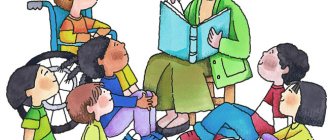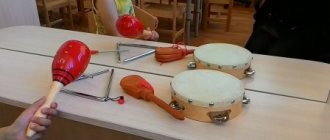A child with dysarthria cannot pronounce sounds clearly and correctly.
The cause of this condition is damage to certain parts of the brain “responsible” for correct connections with the articulatory apparatus. A severe form of dysarthria is accompanied by such obvious external manifestations that it is simply impossible not to notice it. In addition, it mainly accompanies such complex diseases as cerebral palsy, and treatment is carried out in a complex manner. Dysarthria can be of different types: cortical, bulbar, cerebellar, subcortical, depending on which part of the brain is affected. Accordingly, corrective measures will be slightly different.
Separately, I would like to note a milder form of dysarthria - it is called erased. This option may seem to parents as something insignificant that does not require deep attention. After all, Vanya’s neighbors also spoke poorly before school, but now he studies well!
You shouldn't look at Vanya and other children. Dysarthria is fundamentally different from simply not pronouncing individual sounds. Correcting this condition may require a long time and considerable effort on the part of the child and his parents.
Who treats dysarthria
To correct the situation, you need to contact two specialists - a neurologist and a speech pathologist. An accurate assessment of the condition can only be determined after a thorough examination and history taking.
Corrective measures are also carried out in two directions - neurological and speech therapy. An integrated approach includes methods such as:
- Drug therapy.
- Physiotherapy.
- Physiotherapy.
- Speech therapy classes.
Correction of the pronunciation aspect of speech
The pronunciation side of speech includes sound pronunciation and prosody (intonation, melody, pause, stress, tempo, rhythm and timbre). The functioning of the pronunciation side of speech is closely related to articulatory motor skills and the phonemic side of speech. Pronunciation of sounds is the phonetic design of speech and at the same time a complex of speech motor skills by which it is determined.
Corrective work is based on the following principles:
- Connections of speech with other aspects of mental development. To implement it, correctional influence is carried out not only on speech activity, but also on non-speech processes, the patient’s personality as a whole;
- Systematic approach. The pronunciation side is considered as a system that includes a number of components. Corrective work is aimed at their development (development of articulatory motor skills, sound pronunciation, phonemic perception, prosody);
- The development principle involves analyzing the process of the occurrence of a defect. The immediate result of impaired sound pronunciation in patients with dysarthria is limited mobility of the speech organs. Difficulties in articulation cause pronunciation deficiencies, which can be expressed to varying degrees. One manifestation may be a consequence or cause of another. Corrective work is directed not only at the consequence of the violation - defects in sound pronunciation, but also at their root cause - violations of articulatory motor skills.
Correctional speech therapy work is carried out using various methods: practical, visual, verbal. Practical methods include imitative-performing, constructive and creative exercises, games and modeling. Visually - observation, examination of profiles, diagrams, showing a sample task and method of action. The main verbal methods are conversation, reading, story.
The work of a speech therapist-defectologist for dysarthria
In this case, the speech pathologist-defectologist takes on the responsible role of correcting existing disorders in the child’s speech. It is very important that parents understand the need for regular classes and mandatory homework.
With the right approach, the prognosis for the erased form of dysarthria is the most favorable. The child is fully capable of mastering correct speech and will be able to successfully study at school.
What is included in the classes:
- Articulation gymnastics. It is necessary in order to “teach” the tongue to take the correct place when pronouncing a particular sound.
- Exercises to develop correct speech breathing.
- Development of fine motor skills. It is widely known that the better the coordination of the fingers, the faster correct speech is formed.
- Formation of spatial orientation.
- Speech therapy tongue massage. Even due to minor brain damage, many children have disturbances in the tone of the articulatory apparatus. A special massage helps relieve excess tone or, conversely, strengthen the necessary muscles.
- Establishing the correct pronunciation of sounds.
Stages of correction of sound pronunciation disorders
The speech therapist adheres to a strict sequence of sound production for dysarthria. Corrective work consists of 6 stages.
First: the specialist prepares the articulatory base for the production and pronunciation of palatal, sonorant, hissing and whistling sounds. When the baby masters some of them, the speech therapist moves on to working on them. It involves kinesthetic, auditory and visual control. Here is an example of a speech therapist’s instructions to a small patient: “Look in the mirror and repeat after me,” “Look in the mirror and do the exercise,” “Look at yourself in the mirror, stretch out your lips.” This feature of sound production gives good results.
This approach is necessary to reduce the apraxic disorders that accompany dysarthria. In general, the first stage is the foundation for the further development of sound pronunciation skills.
Second: the speech therapist determines the sequence of correction. He assesses which articulatory structure the patient has “mature”. Many children with motor and speech disorders are better at producing more complex sounds, such as hissing sounds. But the patient can master lighter whistling sounds, with which it is recommended to begin correction, later.
Third: the specialist stimulates or plays a certain sound. When staging, he uses classical techniques - staging by imitation, mechanical or mixed method.
Fourth: consolidation, or automation. This is the most difficult stage in all correctional work. It takes the most time. Often children master a sound and pronounce it in isolation, but make mistakes in speech. Therefore, after the production stage, the speech therapist focuses on working on isolated sound pronunciation, and then connects words with different syllable structures. Thus, the child pronounces the sound at the beginning, middle or end of words. Then the speech therapist connects sentences in which the sound being studied is concentrated.
The speech therapist selects lexical material individually. It must be appropriate for the baby’s age and capabilities, and also not include sounds that he cannot yet pronounce or distort.
Fifth: separation of delivered and oppositional sounds. First, the speech therapist suggests 2 syllables, then increases to 3. for example, sa - sha, sta - shta, etc. After this, he works on pairs of words with different syllable structures.
Sixth: developing communication skills. Another difficult stage. Often children communicate in a speech therapist’s office, but in front of other people and outside the office, the acquired speech skills are lost, and the child begins to speak “the old fashioned way.” In order to develop communication skills, the painstaking work of a speech therapist is necessary, but without the desire of the child himself, success cannot be achieved either.
The development of communication skills in dysarthria is facilitated by techniques such as memorizing rhymes, retelling or writing stories.
Forecast and prevention of cerebellar dysarthria
The prognosis for regression of the disease is good. But subject to timely and comprehensive treatment.
The first condition is to identify the cause of the disease and direct therapy towards its elimination.
The second condition is speech therapy work aimed at restoring and improving speech skills.
How pronounced the residual symptoms of cerebellar dysarthria will be depends on the degree of damage to the cerebellum. The most difficult disease to treat is one that develops against the background of oncology or hereditary diseases.
Causes of development of cerebellar dysarthria
The disease is based on damage to the cerebellar vermis and hemispheres, disruption of the connection of the cerebellum with other parts of the central nervous system. These disorders can be caused by the following factors:
- Vascular causes of the cerebellar form of dysarthria. Hemorrhagic and ischemic stroke;
- Injuries. TBI, neurosurgical operations, intracranial birth injury;
- Neuroinfections. Meningoencephalitis, encephalitis, enterovirus infection, chicken pox, mumps;
- Toxic causes of the cerebellar form of dysarthria. Acute intoxication, poisoning;
- Neoplastic. Cerebellar tumors, paraneoplastic process in oncology;
- Degenerative. Pierre-Marie's ataxia, Friedreich's ataxia.
When diagnosing a disease, the cause of its development is first determined.
How to overcome bulbar dysarthria?
Triggers for Bulbar Palsy
First of all, bulbar palsy can be caused by such negative effects on the nuclei of the cranial nerves as neuroinfection (encephalitis), intoxication, traumatic brain injury, central nervous system tumors, and sometimes complications after inflammation of the middle ear.
Children with birth injuries are at risk for bulbar dysarthria: at the intrauterine stage of development and at the time of birth, the child is especially vulnerable. Therefore, it is very important to carefully examine the child in infancy. Collect a detailed history: if there was a quiet cry, squeaking, profuse regurgitation in a “fountain”, impaired sucking and swallowing; if it is known that the child has not turned over from tummy to back for a long time, these are serious reasons to contact a pediatric neurologist.
Symptoms: physiology and speech
When examining the articulatory apparatus, a soft flaccid (hanging) palate is observed, palatal reflexes are absent or reduced. The tongue is motionless, atrophied or deviates to the side; in case of damage to the XII pair of cranial nerves, twitching is observed in the muscles of the tongue. The pharyngeal reflex is absent or the pharyngeal reflex is weakly expressed, and therefore swallowing is difficult (dysphagia), and the person may choke, food may enter the nose. Salivation is increased, and because the mouth of a person with bulbar palsy is typically open, saliva leaks out. When eating food, it also falls out of the mouth.
Respiratory function is often impaired. In particular, with bilateral damage, suffocation may occur. The activity of the heart may also be disrupted - acceleration and deceleration of the pulse (tachycardia and bradycardia). This is a particularly dangerous factor for newborns; often in this case they do not survive.
The effect of bulbar palsy on speech is due, first of all, to the fact that the mobility of the speech organs and facial expressions are limited. The articulation of vowels is reduced to a neutral sound, and voiced consonants are reduced to a voiceless sound. As a result, the statement is difficult to understand (and with severe disorders, anarthria occurs - a complete inability to pronounce sounds). In addition, the defect manifests itself in weakness of the voice and speech breathing, impaired intonation and a “nasal” tone of speech.
Diagnostic techniques
The study of the speech apparatus requires observation of the tongue: the specialist determines whether the organ deviates to the side - and if so, in which direction (this indicates the type and severity of paralysis), whether there is atrophy or tremor. In addition, it is important to diagnose the condition of the oral muscles - in particular, the folding of the lips and the patient’s ability to whistle.
In order to make a diagnosis, in addition to examining the organs of the speech apparatus, the neurologist must conduct symptomatic and instrumental examinations such as MRI, EEG, ultrasound of the spine and others.
The speech therapist, in turn, assesses the state of articulatory and facial motor skills (according to L.V. Lopatina, G.V. Dedyukhina), muscle tone (hypotonicity, dystonia), the ability to involuntary and voluntary movements (dyspraxia, apraxia), the quality of articulatory and facial movements (accuracy, rhythm, amplitude, strength of muscle contraction, time of fixation of the articulatory pattern, number of correctly performed movements, switchability from one movement to another, etc.)
The required outcome of the examination is a comprehensive profile of the structure of the motor disorder.
Treatment options
First of all, it is necessary to ensure the maintenance of vital functions - swallowing and breathing. Drug treatment is used here: medications are used that improve metabolism in nerve cells and normalize muscle tone, as well as vitamin complexes.
Next, neurological correction is involved: exercise therapy, reflexology
Speech therapy work includes such activities as:
— articulation exercises, active and passive speech therapy gymnastics;
- various massage techniques (but not the usual speech therapy probe - for bulbar paralysis it is ineffective): classic manual, acupressure using BAP, isotonic exercises, artificial local hypo- and hyperthermia;
— breathing exercises and biofeedback therapy (conducted in courses);
- voice exercises (chanting, logorhythmics, speech with a metronome).
Complex activities include music therapy, classes with a neuropsychologist, and kinesiologist.
The prognosis and duration of correction depends on the severity of damage to the cranial nerves. In addition, the sequence and combinations of procedures depend on the individual situation and are determined after a thorough diagnosis.







